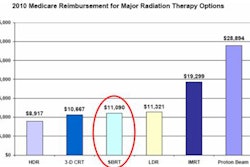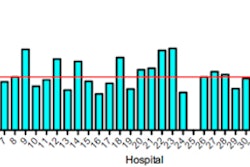Dear AuntMinnie Member,
Our coverage of this week's American Roentgen Ray Society (ARRS) conference continues, with international editor Eric Barnes on hand in San Diego to cover the proceedings.
First up is a new study that could change existing protocol on how often to follow women who have received breast conservation therapy (BCT) rather than mastectomy for breast cancer. Due to the higher risk of cancer recurrence, BCT patients typically receive surveillance mammography on an annual basis.
But researchers from the University of California, San Francisco presented a study that indicates that following BCT patients twice a year could find cancers at an earlier stage. Learn more by clicking here.
We're also highlighting intriguing research from a group led by imaging utilization experts Dr. David Levin and Dr. Vijay Rao at Thomas Jefferson University in Philadelphia.
They claim that the U.S. government has been overstating imaging utilization growth in figures released by the Government Accountability Office (GAO). The GAO numbers have been instrumental in framing the debate over rising imaging costs; some experts believe they form the foundation behind federal efforts to cut radiology reimbursement.
Why does the Thomas Jefferson group believe the numbers are inaccurate, and what does it offer as an alternative? Find out by clicking here.
Hospitals try to save on service
In other news, a new report released this week provides details on the imaging equipment service sector, an area of the industry that's rarely examined but has become increasingly important in an era of tight budgets.
The study indicates that while traditional service arrangements continue to make up the lion's share of equipment maintenance, more hospitals are turning to shared-service deals, in which hospitals use in-house staff for minor problems and turn to vendors for larger issues, according to an article by contributing writer James Brice.
While many hospitals also use independent service organizations (ISOs), particularly for x-ray and ultrasound equipment, third-party service providers have had less success in penetrating the market for more advanced equipment. Access to software continues to be a limitation for ISOs, the report states.
Learn more by clicking here, or visit our Imaging Center Digital Community at centers.auntminnie.com.



















